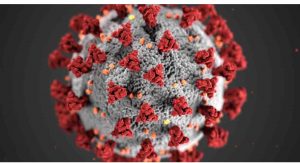There is a glimmer of hope as scientists all over the world are working to find vaccine and cure for coronavirus.
Israeli researchers are the latest to say they have invented a reusable face mask that can kill the coronavirus with heat by drawing power from a mobile phone charger.
According to reports by Reuters, the disinfecting process takes about 30 minutes – and users should not wear the mask while it is plugged in.
The new mask has a USB port that connects to a power source such as a standard cellphone charger that heats an inner layer of carbon fibers to up to 70 degrees Celsius (158 degrees Fahrenheit), high enough to kill viruses.
According to Professor Yair Ein-Eli, who led the research team at Technion University in Haifa, disposable masks, in high demand globally during the health crisis, were not economically or environmentally friendly.

“You have to make it reusable and friendly, and this is our solution,” he said about the invention.
The prototype looks like a standard N95 face mask, with a valve at the front and rubber bands to hold it in place around the head.
- Congresswoman Ilhan Omar’s father dies from Covid-19
- Raila Odinga refused to meet with Ruto’s confidant
- The governor’s life is in danger-Mike Sonkos security withdrawn
- Moses Kuria questions why Huduma number is not used to tackle Coronavirus
- US President Donald Trump asks governors to consider reopening schools
The researchers submitted a patent for the mask in the United States in late March and say they are discussing commercializing the product with the private sector.
It will likely sell at a $1 premium over the price of a typical disposable face mask, the researchers say.
This development comes in the wake of other positive findings from Britain where scientists announced Tuesday a major coronavirus breakthrough, saying a cheap, readily-available steroid can prevent deaths from COVID-19.
RELATED:Covid-19 hits Statehouse as 4 test positive
The scientists from Britain’s University of Oxford said trial drug dexamethasone reduced death rates by 35% for patients on ventilators, and by 20% for less immediately critical patients needing oxygen.